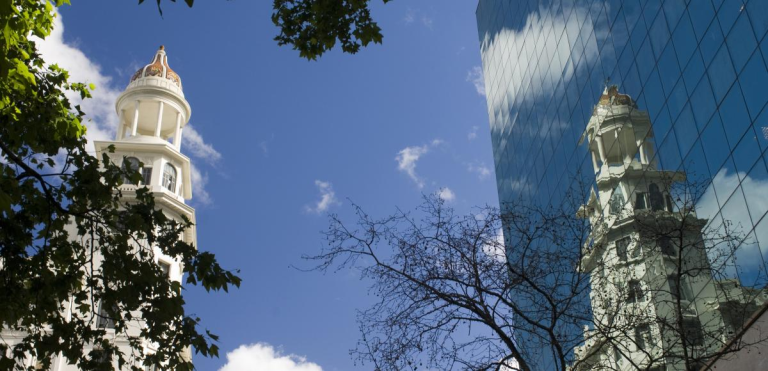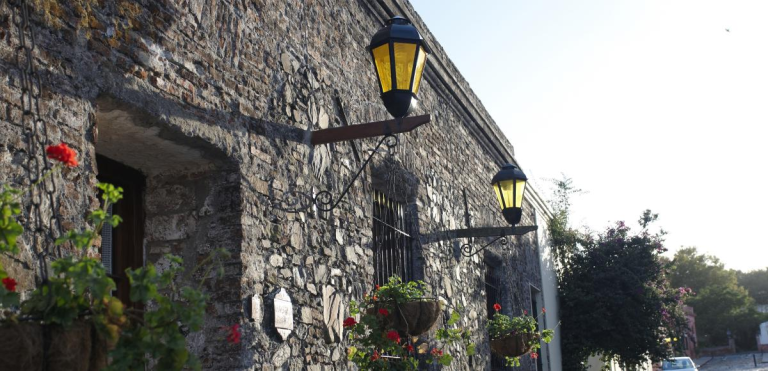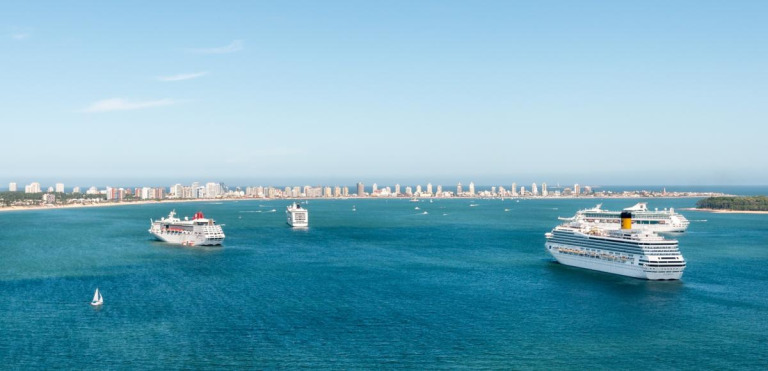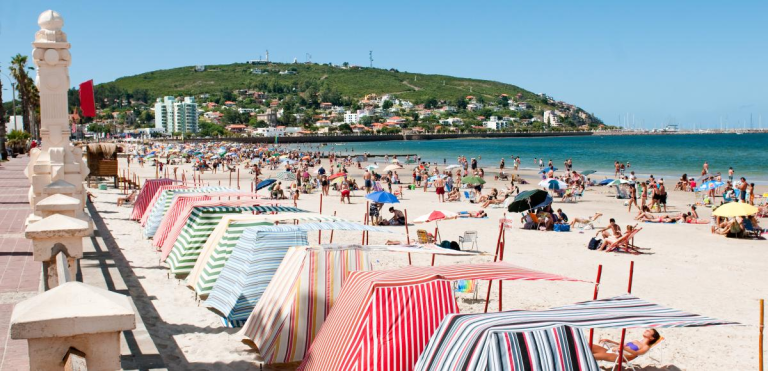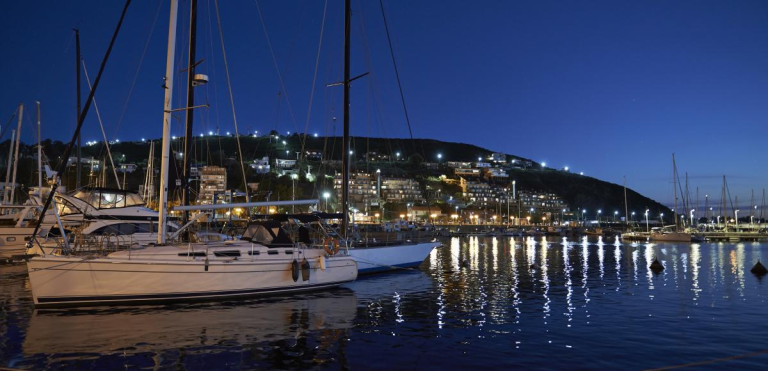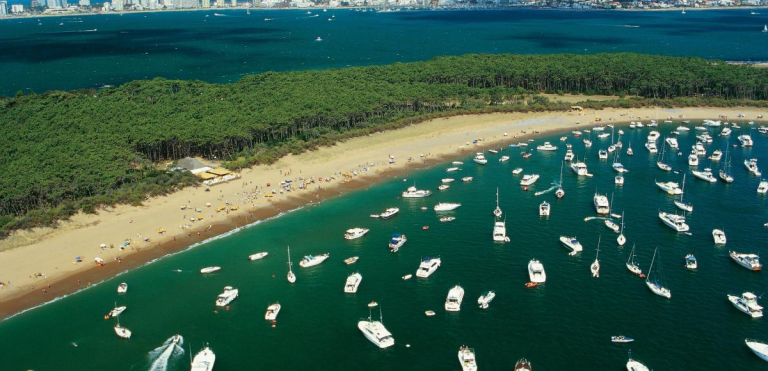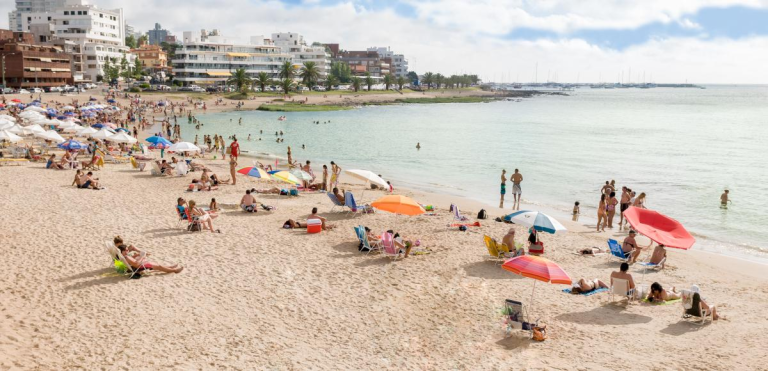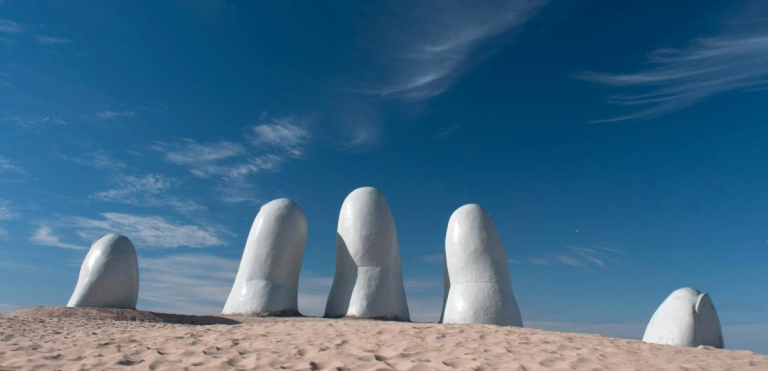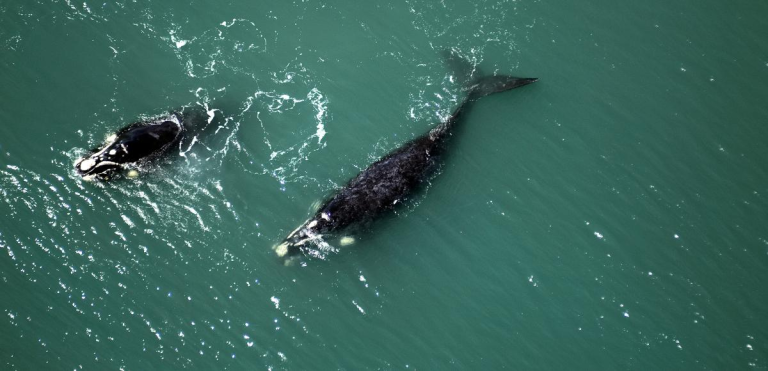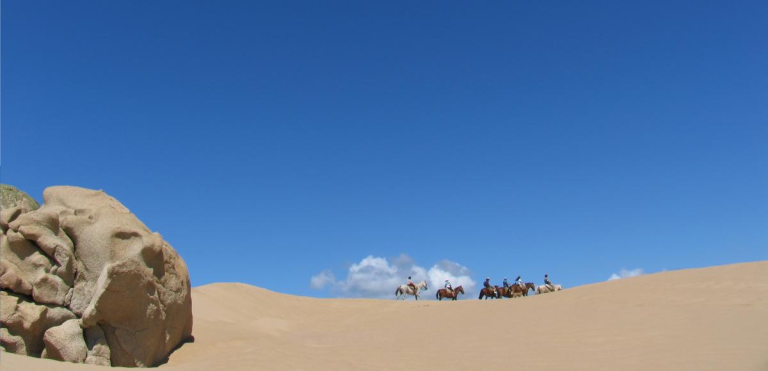Uruguay: a destination to Discover
Uruguay is a country deeply connected to nature and boasts both a great variety of landscapes and numerous tourist attractions.
The continuous improvement of infrastructure underscores the commitment to providing visitors with high-quality services and an unforgettable experience. The introduction of the Tax-Free system is an example of the country’s dedication to providing additional benefits to tourists. In recent years, Uruguay has also expanded its hotel facilities and other accommodation options. From budget accommodations, campsites, and guesthouses to five-star hotels with conference rooms, golf courses, polo fields, pools, spas, and a full range of services. Other types of accommodation offering a wide range of services include tourist farms and resorts with natural hot springs. Additionally, it is possible to rent houses year-round in coastal cities and throughout the country. The temperatures also invite visits to Uruguay at any time of the year. Summer and spring range from 21°C to 32°C, while winter and autumn range from 6°C to 17°C.
Given these premises, significant opportunities also open up for cruise tourism, offering multiple possibilities to visit the country with both coastal and river itineraries, ready to unveil a new destination capable of surprising and delighting.
Montevideo
The suggested routes are based on Montevideo or Colonia del Sacramento. For passenger embarkation and disembarkation, Montevideo has a modern port with the advantage of being only 20 km away from an airport. Colonia del Sacramento has a commercial port specializing in passenger traffic to and from Buenos Aires, Argentina.
Colonia del Sacramento is a charming city declared a UNESCO World Heritage Site in 1995. Its houses, cobbled streets, and typical lanterns offer a unique landscape. A visit to the historic district, as well as the Plaza de Toros, Calle de los Suspiros, and Anchorena Park, is a must. These places exude the authentic atmosphere of the location, rich in museums and cultural sites.
Colonia del Sacramento
In Carmelo, nestled on the Uruguay River, a sense of relaxation prevails, and visitors can appreciate the country’s gastronomic traditions. The city perfectly embodies the concept of “Uruguay Natural” due to its position between the riverbanks and the hinterland, where vineyards and other natural landscapes can be explored, such as Calera del las Huerfanas. It’s also unforgettable to experience horseback rides or admire the skillfully crafted local crafts. The city has a river terminal specializing in passenger traffic to and from El Tigre, Buenos Aires, Argentina, and a small airport very close to the port.
Further north, on the banks of the Uruguay River, is Fray Bentos, the capital of the Rio Negro region. Grown in past decades due to the meat industry, the industrial site has now been recognized as a UNESCO Cultural Heritage Site. The city offers much more, including the historic center, craft beer production, and the opportunity for boat trips on the Uruguay River. The M’Bopicuá Biopark is also very interesting: a 150-hectare reserve with a wildlife breeding station, an interpretative path with native flowers, and an area of great cultural value. For sea lovers, the beach of Las Cañas, famous for its white sand and located right next to a fascinating natural forest, should not be missed.
Cruise Ships in Uruguay
Nuevo Berlin is another small town on the banks of the Uruguay River, in the Rio Negro region. It is one of the entrances to the “Parque Nacional Esteros de Farrapos e Islas del Río Uruguay,” a system of river wetlands, islands, and islets that are permanently and/or temporarily flooded following the flooding of the Uruguay River. From here, one can admire the island landscape of the protected area, concentrating a wide variety of vegetation. A nature paradise where visitors can be immersed in the relaxing atmosphere and discover the peculiarities of the country in terms of both fauna and flora. Equally interesting is the La Yeguada route, which includes an archaeological site and allows an understanding of the rich history of these places. Don’t miss a honey tasting, particularly renowned in the area.
We then venture into the Rio Negro to discover Villa Soriano, a quiet town nestled on the river founded in 1694. Its colonial structures and the richness of its past have made it a National Historical Monument. Disembarking at the river station allows visitors to take a route through an ancient chapel, museums, and murals painted by artists. In the surroundings, there are opportunities for birdwatching, kayaking on the river, and fishing trips. A visit to the local craft center Timijù Workshop is worth it.
Among the lesser-known maritime destinations is undoubtedly Piriàpolis, located east of Montevideo. A very lively city with a beautiful promenade available to visitors and a wide range of beaches. Inspired by the great European resorts of the Belle Epoque, the city was founded by Francisco Piria in 1809, a visionary and alchemist who described the area as “the thermal resort of the future.” Surrounded by hills and rich vegetation, it is also known for its mystical trails, chosen by pilgrims for meditation or connecting to places of energy. Those who love social life and vibrancy can stroll along the Rambla de los Argentinos, not overlooking other important sites such as Cerro Del Toro, Pabellón de Las Rosas, Piriápolis Art Museum, Paseo de La Pasiva, Castillo de Piria, and San Antonio Hill.
Piriapolis
Piriapolis
Certainly better known in the cruise industry is Punta del Este, one of the main tourist resorts in the Americas, located in the southeastern part of the country, where the waters of the Rio de la Plata and the Atlantic Ocean meet. This modern city boasts impeccable services and breathtaking landscapes, with over 50 kilometers of extensive beaches renowned for their exotic natural beauty and environmental excellence. Punta del Este offers a range of entertainment options, including world-class cuisine, art exhibitions, festivals, parades, a lively casino, and nightclubs. The city seamlessly blends luxury and leisure, making it a sought-after destination for those seeking an experience that combines culture and fun, yet remains unforgettable. It is recommended to stroll leisurely between Avenida Gorlero and Plaza Artigas, occasionally reaching “Calle 20 – Fashion Road,” and stopping at some museums among the many in the city. Also, see Casa Pueblo, Parque Jagüel, the wavy bridge, and Isla Gorriti.
Gorriti Island
Playa Mansa and port promenade, Punta del Este
Playa Brava, Punta del Este
Montevideo offers history, colonial and modern architecture, refined restaurants, and must-visit attractions. Visitors can enjoy a rich cultural heritage, including both tango and candombe, as well as the world’s longest carnival, museums, art galleries, bookstores, shopping centers, markets, antique shops, milongas, and design and aesthetics studios. Walking through the old town, among Jewish sites or period buildings like the stadium, Solis Theater, and Palazzo Salvo, is an immersion in local culture and history. If lucky enough to have an overnight stay, there will certainly be plenty to do in the Uruguayan capital, equipped with the best facilities and a wealth of cultural richness.
Too often, the cruise landscape is perceived as static within established routes and consolidated destinations. In reality, there are countless opportunities to expand itineraries and offer new stimuli to cruise companies and, above all, visitors. Uruguay is an example of how new ports can open up both in maritime cruises on the eastern coast of South America and in river cruises. Within the latter, tourists can explore even more captivating cities and natural landscapes, allowing them to discover the authentic charm of rivers such as the Uruguay and the Rio Negro. These places are rich in culture and traditions, where one can uncover the authentic allure of the country, immersed in nature, craftsmanship, and the most typical products of this land.
Wildelife
Horseback riding in Uruguay
Today, Uruguay has a series of facilities that already offer the most attractive and interesting experiences during a maritime cruise itinerary. However, there is also enormous potential to develop river itineraries that allow exploring the interior of the country and its most characteristic and profound features.
Don’t miss further news, updates and reviews on the world of cruises on Cruising Journal.

